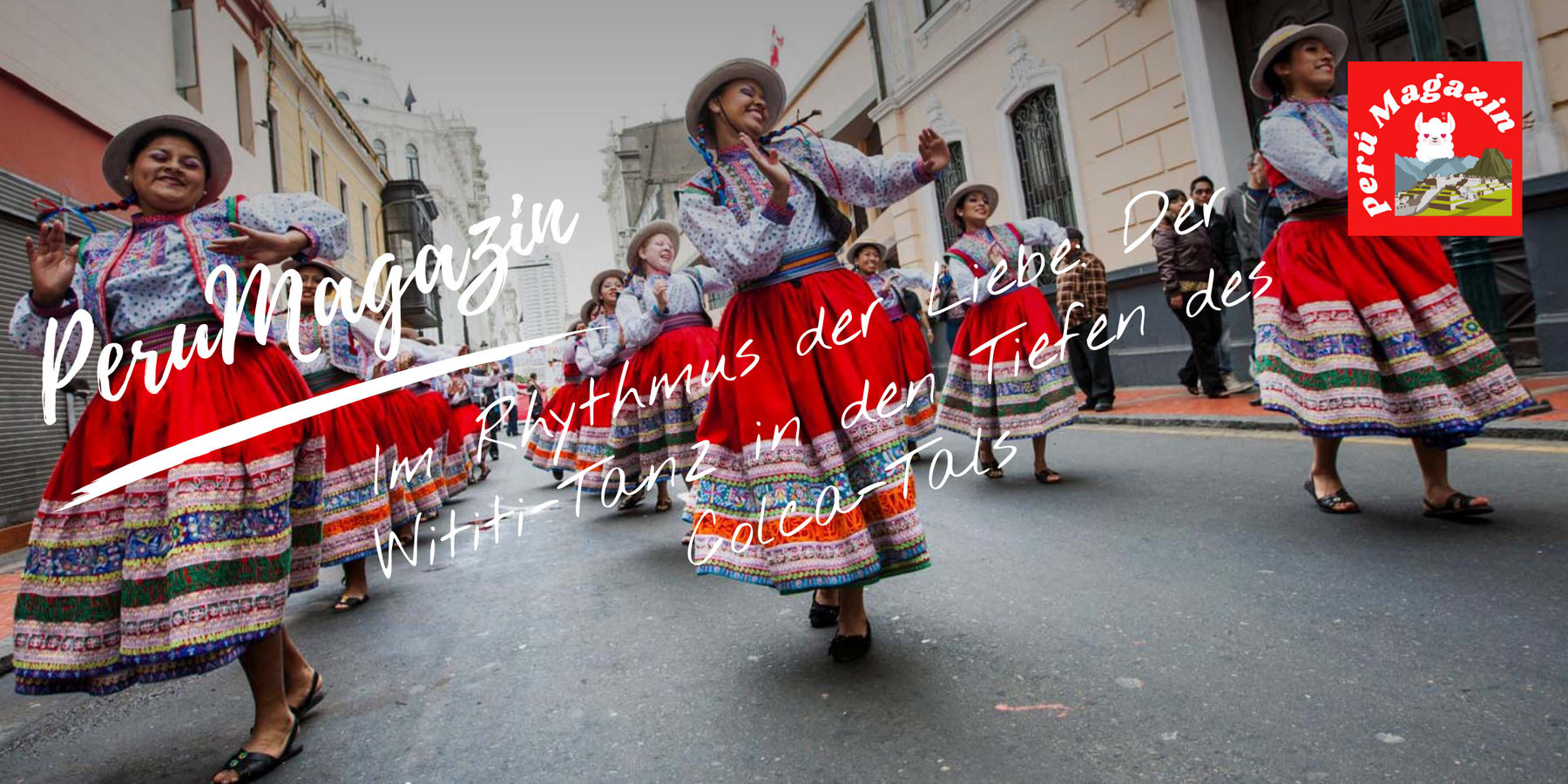
In the rhythm of love: The Wititi dance in the depths of the Colca Valley

A quiet whisper of the past echoes through the picturesque Colca Valley in the Arequipa region of Peru. Here, in the shadowy depths of this fascinating landscape, a cultural symphony characterized by movement, color and passion unfolds: the Wititi dance. Immerse yourself with me in the mysterious world of this traditional dance, which is not only an expression of emotions, but also a window into the roots of a community.
The cradle of Wititi lies in the convoluted township of Tapay, nestled gently in the hills of the Colca Valley. A place characterized not only by majestic mountain peaks and lush greenery, but also by a rich cultural history that lives on in the vibrant steps of the Wititi dance. 
Let's consider the origin of this dance, which dates back to the era of ancient warriors. Stories tell of courageous fighters who used not only their physical prowess but also the grace of their movements to win the hearts of young women. The Wititi, or also known as the “Dance of Love”, became a cultural heritage that was passed down from generation to generation.
It's fascinating to see how different styles come together in Wititi. From erotically charged movements that enliven the senses, to emotional sequences that tell stories without words, and even religious elements that evoke deep spiritual connections. Every step, every turn, carries the weight of history and tradition, making the dance a living expression of Peru's cultural diversity. 
Wititi dance from behind in Arequipa
The stage for the Wititi can often be found at major festivals and cultural events in the southern region of Peru. Here, locals and curious visitors alike gather to witness the breathtaking performance. The dancers, clad in intricately designed costumes, not only present a visual splendor but also help celebrate Peru's rich craftsmanship.
The costumes themselves pay homage to the region's cultural identity. In a sea of colors and patterns, they reflect the diversity of the landscape, the complexity of history and the depth of tradition. Each piece tells its own story and becomes a living part of the cultural heritage.
The Wititi dance is not only for entertainment but also has a significant role in preserving cultural heritage. Passing this ancient art form from one generation to the next is crucial to maintaining the community's identity and history. Every dance step becomes a step into the past, a legacy preserved with every turn.
In modern times, the Wititi dance has also attracted tourist interest. Visitors from all over the world flock to the festivals to take part in this authentic cultural experience. The opportunity to experience the dance in its traditional setting adds a deep cultural flavor to the trip and opens a window to Peru's hidden treasures.
Ultimately, the Wititi dance reveals not only the cultural beauty of Peru, but also the deep connection between history, tradition and community. The swinging movements and colorful costumes of this dance reflect the soul of a region that proudly celebrates its roots while being open to the world. May the Wititi dance continue to dance to the rhythm of love through the centuries and captivate us all.
#PeruMagazine #Peru #WeLovePeru #WititiDance #ColcaValleyCulture #ArequipaTradition #PeruvianDances #CulturalHeritage #TapayHistory #EmotionalMovements #PeruFestivals #ColorfulCostumes #CulturalDiversity #CraftsPeru #DanceofLove #PeruvianIdentity #TourismPeru #CulturalExperience #patop #patopversand #wititi

Leave a comment